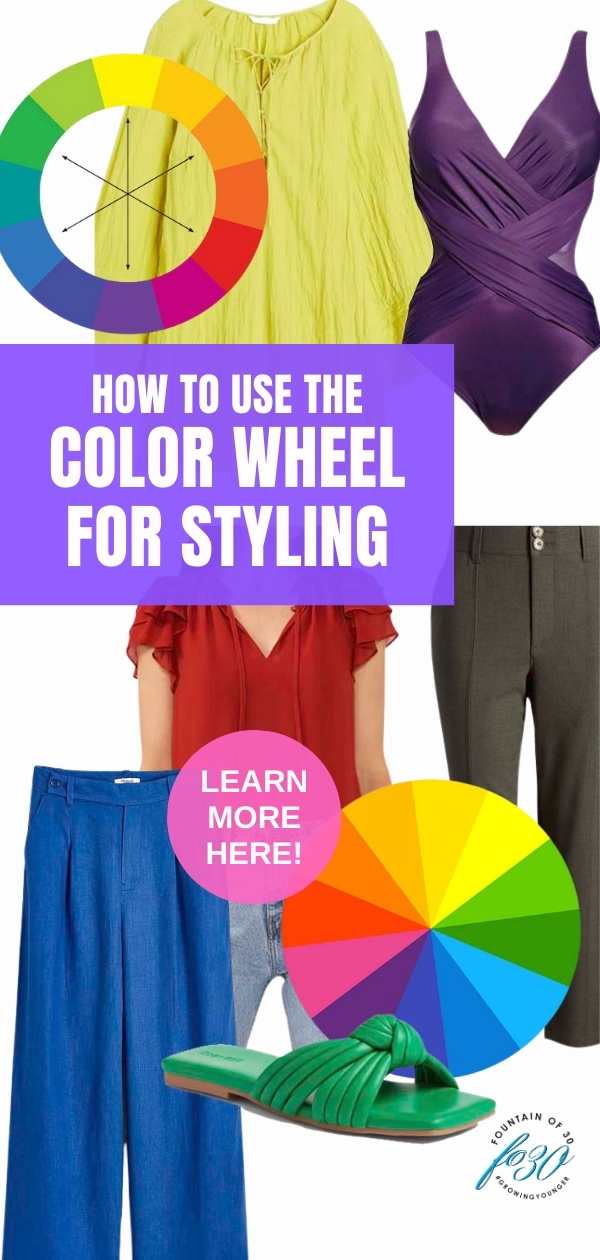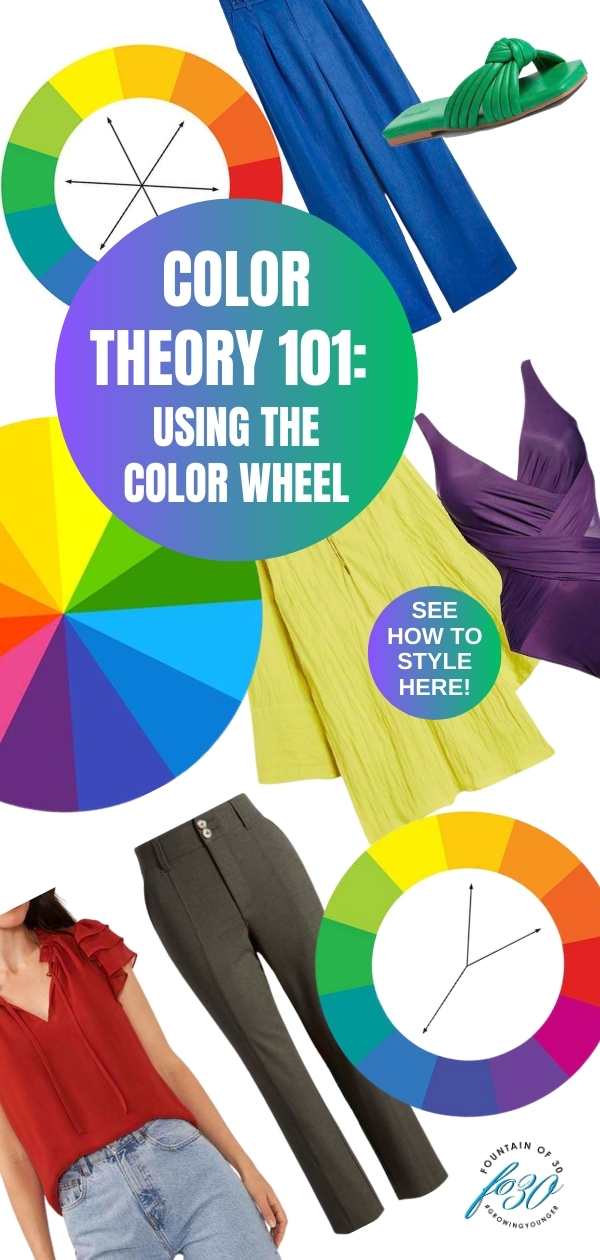You’ve probably seen and even used the color wheel before (at least in art class or helping your kid with art class), but did you ever apply it to your closet? Using color theory and the color wheel for clothes to create interesting, harmonious outfits is one way to take your ensembles from good to great.
Color Theory 101
Often, the people that we deem innately stylish or “born with fashion sense” have a good understanding of color theory, color harmony, color temperature or saturation, and more that allows them to put together eye-catching and flattering combinations.
How to Use The Color Wheel for Clothes
There are lots of ways to use the color wheel to create unique ensembles, make unexpected pairings or remix items you already own. Here are some of our favorite ways to use the color wheel for outfit ideas or to create color combinations that are interesting, flattering, and most importantly, make us happy.
YES! I LOOK FORWARD TO #GROWINGYOUNGER
PLEASE SUBSCRIBE ME TO YOUR MAILING LIST.
Complementary Color Pairings
This is often the boldest option, since it involves pairing a primary and secondary color that are opposite each other on the color wheel e.g., blue and orange, purple and yellow, or red and green.
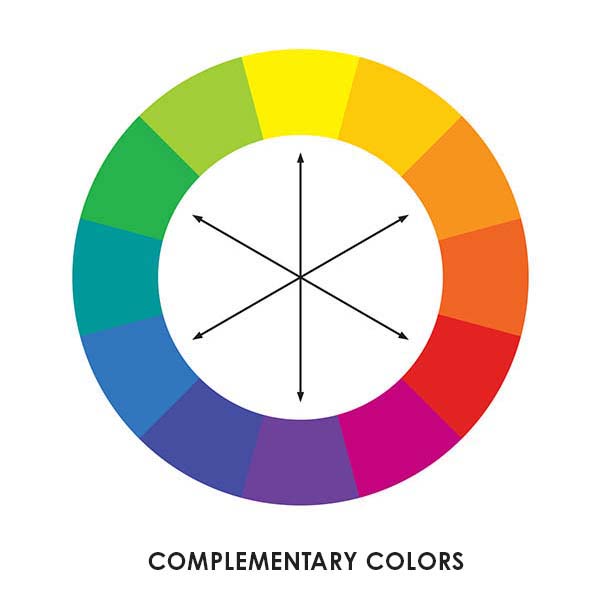
While outfits using complementary color pairings can be extremely high contrast (think sports teams), it is definitely possible to do this type of color wheel combo in a more low-key way if you make one shade the centerpiece.
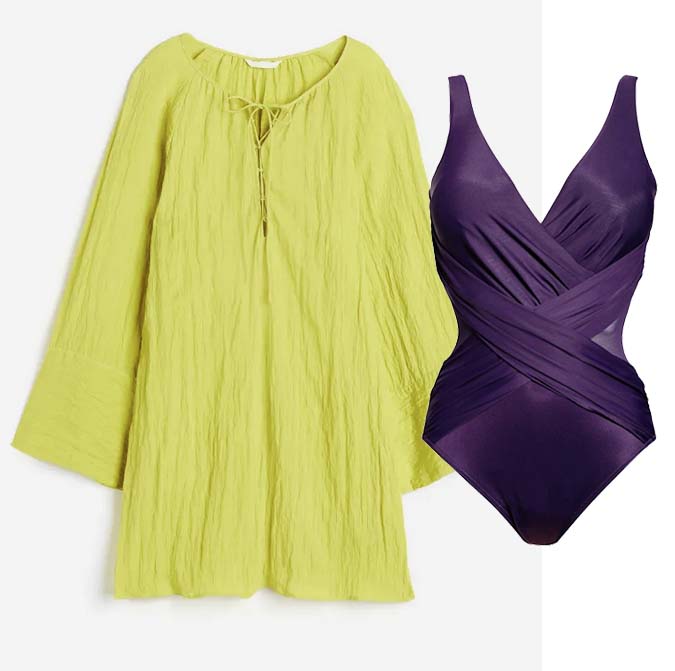
Think a lemon yellow dress like this one from H&M with amethyst-hued accessories, or as a color-up over a blue-violet or purple swimsuit.
Or you can do complementary colors in a more subtle way. For instance, if you like the idea but still think strong contrasting color pairings are a bit much, you can experiment with different shades and color saturations for softer variations on the complementary color theme.
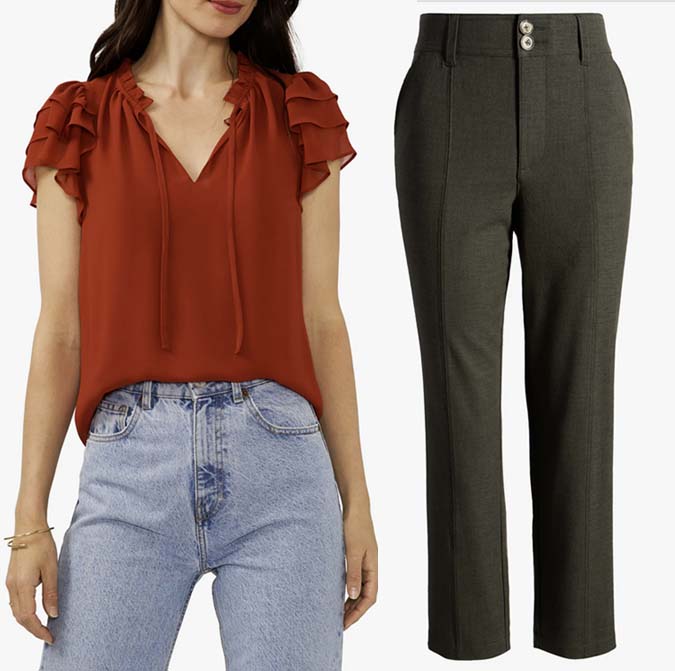
For instance, a more saturated orange scarf might be a great pop of color on a navy coat, or a true crimson top like this one from 1.State may work beautifully with olive pants.
Split-Complementary Color Combinations
This is when you choose a color pairing where the colors lie across from and adjacent to each other on the color wheel. Often as eye-catching as complementary colors, examples of a split complementary color scheme include blue with yellow-orange or red-orange, or green with red-purple or red-orange.
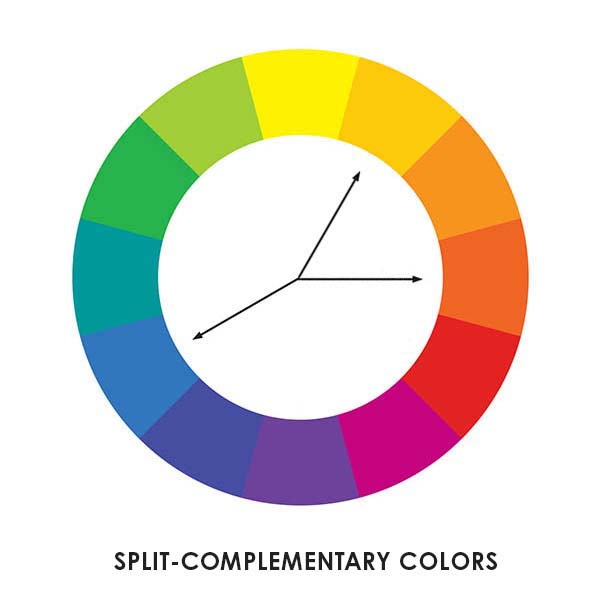
Like complementary color combinations, split-complementary pairings can be a lot of look, but you can tone it down by lowering the saturation or changing the temperature of the exact shades you wear.
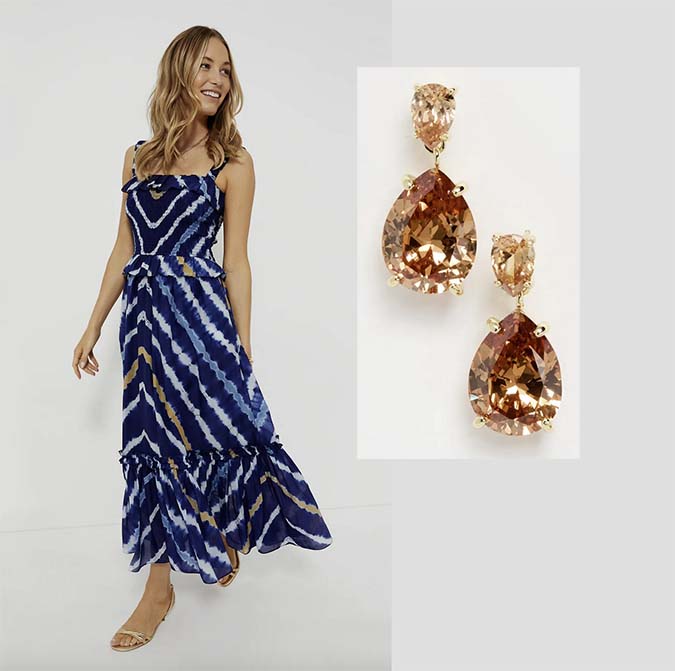
Prints are also a great way to bring in complementary or split-complementary color combinations, like the mostly blue with hints of golden orange in this Tuckernuck dress. Just add a pair of earrings like these by Shashi or another accessory that echoes the orange hue for an extra pop.
Analogous Colors on the Color Wheel for Clothes
This is one of the easiest ways to color match or color coordinate. An analogous color pairing is simply wearing two colors that are next to each other on the color wheel, such as blue and purple or blue and green.
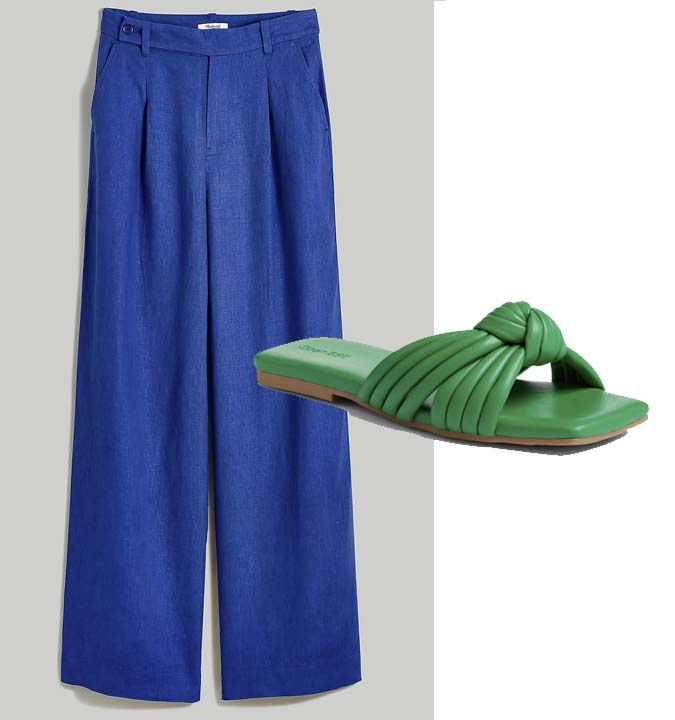
For instance, these rich indigo linen wide leg pants would be gorgeous with a pair of emerald green sandals like these from Open Edit and a white tee or button-up.
Note that none of these options take elements like saturation or temperature of the color into account (at least on the surface). This is the secret sauce that takes color pairings to the next level and can take an outfit from chaotic to brilliant.
Color Saturation
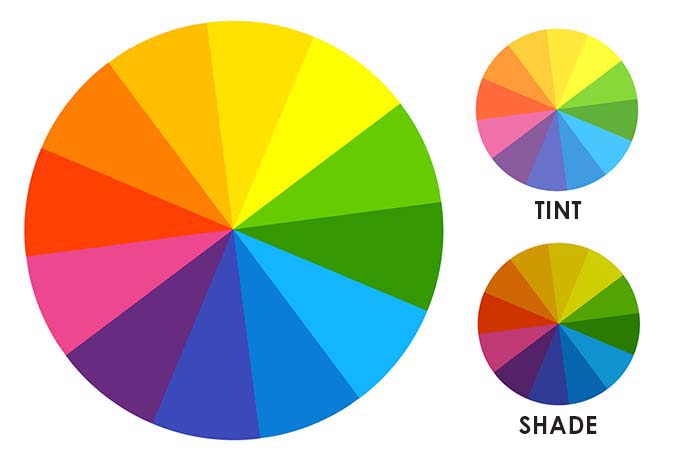
This is how bright or muted a color appears; the more vibrant the shade, the more saturated the color. It can also be used to describe how much white or black is mixed into a shade, with more white making it lighter and poppier (or more pastel) and black resulting in moodier, more muted tones.
Color Temperature
You probably mostly think of undertones when you are choosing foundation, but all colors and items have undertone. This is whether a color is on the warm side or has a reddish or yellowish undertone, or cooler with a blue undertone. Pairing colors (or neutrals) with a similar undertone or temperature tends to be more pleasing to the eye.
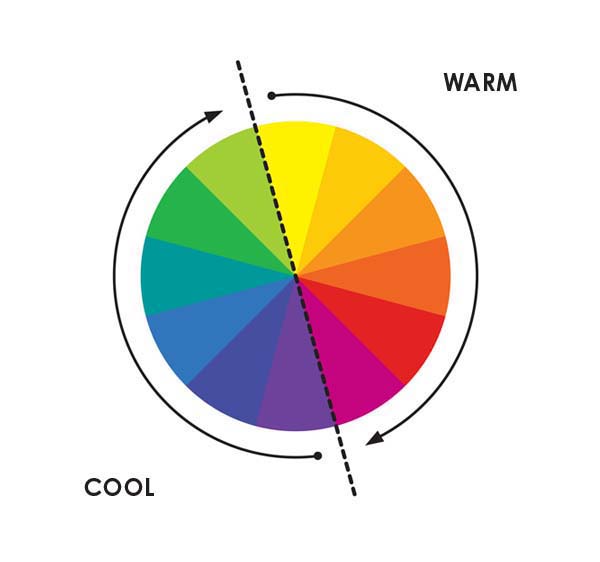
Moreover, don’t forget about metallics! Warm metals like gold or bronze can stand in for yellows and oranges, and silver, gunmetal, or platinum can create a blueish contrast.
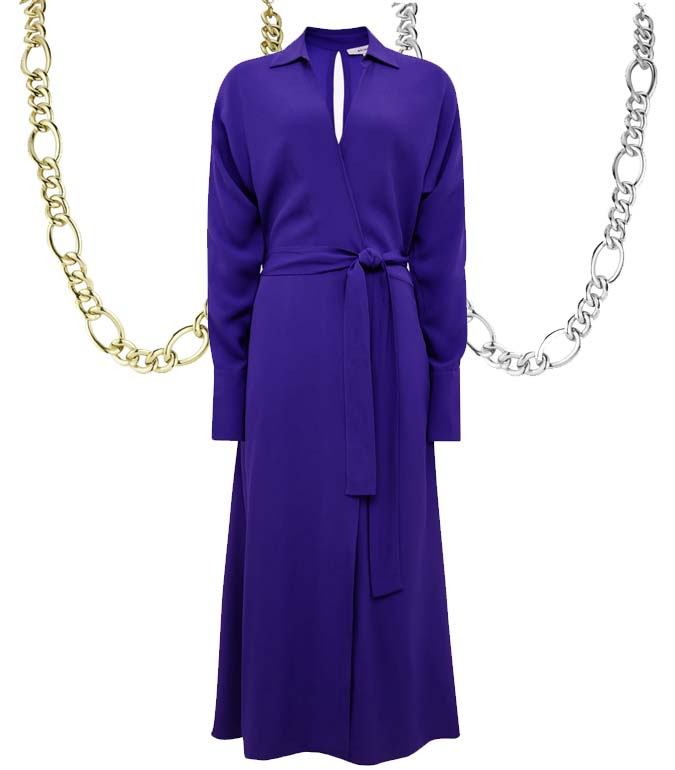
For example, imagine how different — but equally stunning — this violet dress by Reiss would look when paired with gold accessories (complementary) or silver (analogous).
Note that some of these examples may seem super bright or simply a whole lot of “look” for many of us. But you can play with saturation and temperature to make color wheel combinations suit your aesthetic. What’s more, you don’t necessarily have to do these color combinations in big blocks like top and bottom combinations. For instance, you could do a monochromatic navy look with a bright red-orange necklace. Or try a handbag or a soft lavender-gray top with emerald green accessories.
Shop The Featured Fashion Here:
Do you use color theory or the color wheel when you are putting together outfits? Are you interested in learning more about color theory and mixing and matching to make unexpected combinations or get the most out of your wardrobe? Do you consider yourself a color expert, a novice, or somewhere in between? Let us know in the comments or in our Growing Younger Facebook group!
–Jacqueline Zenn
You may also like to read Two Easy Pieces for Summer 2023: Chic Matching Sets and Lace Tops for Summer: Your New Favorite Layering Piece.
This post contains affiliate links which may give us a commission at no additional cost to you.
Color wheel images: IStock
Are you following Fountain Of 30 on Facebook, Twitter, Instagram and Pinterest? We’ve got lots going on, so join in on the fun! Subscribe to our newsletter here. You don’t want to miss a post and promise not to bug you to death. Join our Facebook Group called Growing Younger where women discuss everything good and bad about being over 50. Additionally Lauren hosts a bi-weekly podcast called Beauty is a Bitch! and an Instagram Live series called “Growing Younger Gabfest with Lauren.”
Please pin!
